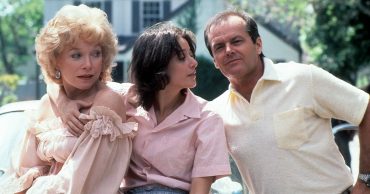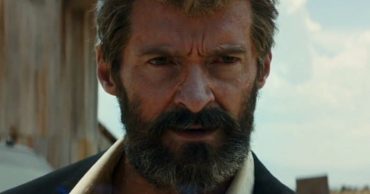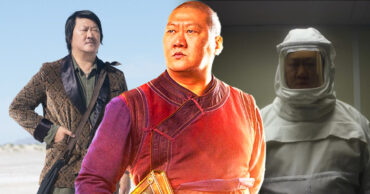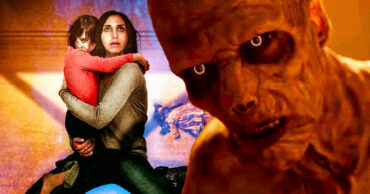
1929 was the year America and Canada agreed to put in concerted efforts to preserve Niagara Falls, the year Mother Teresa arrived in Calcutta, India, to forever change the way the poor of the city were taken care of, the year Popeye first made an appearance in a comic strip, the year the infamous St. Valentine’s Day Massacre was carried out in Chicago, and the year the United States welcomed its 31st President in the form of President Herbert Hoover. Of course, while all this made headlines in newspapers across the world, what made headlines in the entertainment industry throughout the year were the many movies that were released. And our unique list What A Night Out At The Movies In 1929 Would Have in Store For You brings you just the lineup you need!
The New Babylon
A historical drama from the silent era, The New Babylon is a movie that brings to the audience events related to the brief seizing of power by revolutionaries in France in the year 1871 and the establishment of the Paris Commune. However, the main tale that is narrated in the movie is that of two lovers who meet one another and are then tragically destined to be separated forever due to the circumstances surrounding the Commune. A heartbreaking tale where the heroine of the film works in a store named “The New Babylon” and is also a member of the Commune, is in love with Jean, a soldier who works for the army that owes its allegiance to the French government, the movie goes on to a rather tragic showdown where the hero is ordered to dig a grave for the heroine who has been sentenced to death for being a revolutionary. One of the many works of the time that originated in the Soviet Union, The New Babylon shows just how common people often witness the crushing of their dreams in the battles of regimes. If it was a thoughtful and poignant tale that you wished to see on your night out at the movies in 1929, this one would have matched your mood perfectly.
Asphalt
A tale of love intermingled with criminal overtures, Asphalt is a movie that was made in Germany with Gustav Frohlich and Betty Ammann leading the cast and Joe May playing the role of the director. A unique storyline that showcases a budding love that turns into a serious one, and then how it all goes down with one of the lovers being jailed, this is one movie that would have surely caught your attention in 1929. It all begins when Else Heller, a trickster who lives with her criminal boyfriend, falls in love with the rather simple young man Albert. As the two slowly fall for each other, it is now up to Else to reveal her true identity as well as the crimes she has committed and the goods she has stolen. While the two lovers are engaged in a conversation that will decide their fate with one another, the criminal boyfriend enters the scene and is killed accidentally in a brawl. The honest Albert cannot handle the guilt and surrenders himself to the police. In the meantime, Else decides that it is love that she wants and saves Albert by confessing to her crimes and narrating all that went down. The ending shows Else walking away into prison while Albert is waiting outside after promising to be there when she returns. All in all a movie that is different in every way, Asphalt would have been a wise choice on a night out in 1929!
Diary of a Lost Girl
The silent era did not struggle with the barriers of language, which is why it was the perfect time for movies from various countries to mingle with one another without leaving the audience flabbergasted! And one such movie that was made in Germany was Diary of a Lost Girl. Directed by G.W. Pabst and starring Lousie Brooks as Thymian, Fritz Rasp as Meinert, Vera Pawlowa as Aunt Freida, Andre Roanne as Count Nicolas Osdorff, Josef Rovensky as Robert Henning, and others, the film is a tale mixed with tragedy and hope, suffering and momentary states of happiness, and certainly mirrors a time when women were mostly blamed for everything that went wrong in their lives and has to live heartbreaking lives in a patriarchal society that seldom paid them any heed. The storyline follows the many twists and turns in the life of Thymian, a young girl who time and again witnessed the ill-treatment meted out to her and other women by the men around her, and how she encounters several challenges in life before finally finding her peace. “A little more love and no one would be lost in this world!” a line spoken in conclusion, is probably the life lesson we would all have walked out with if we were to choose Diary of a Lost Girl as our movie of choice on a night out at the movies in 1929.
Girls Gone Wild
A highly controversial movie that came under fire for showcasing and even glorifying a lost generation that was restless and reckless and held no regard for the law, Girls Gone Wild was not only criticized for its content but was also banned in certain regions. Starring Sue Carol and Nick Stuart, the new sweethearts of the movies, and a couple that Fox studio was adamant about presenting to the audience as the next couple to watch out for and directed by Lewis Seiler, the film made quite a lot of headlines. However, the true tragedy of the film is that, with its print lost, current generations will never know how the film truly played out on the screen. Even so, Girls Gone Wild remains a path-breaking film of the silent era, even bringing in a new era in storylines that took on the law and glorified gangs and criminals and heroic pursuits where the law was often taken for granted.
Woman in the Moon
Directed by Fritz Lang, and starring Willy Fritsch, Gerda Maurus, Klaus Pohl, Fritz Rasp, Gustl Gstenttenbaur, and Gustav von Wangenheim, among others, Woman in the Moon is a sci-fi silent film from the moviemaking stables of Germany and revealed to audiences several details related to rocket travel. And with all this woven around loads of drama, the movie sure made for a rather interesting piece of work that could be considered ahead of its time. From finding gold on the moon to the greed and selfishness that seems to rule some men, the film then takes audiences through loads of twists and turns, with love forming the foundation of a story that ends with sacrifice. As a movie, there were several instances in Woman in the Moon that were considered peculiarly realistic, especially since most of it came to be when the American space program was still in its early stages. From the countdown before a rocket launch to several other details like foot straps to tackle zero gravity and rocket stages, people watching the movie back then may have found it rather ominous to see all this occur in reality a few decades later.
Piccadilly
In 1929, if you were to watch the film Piccadilly in February, you would have probably lined up to watch it again in June. This is because while the first version of the film was released in February and was a silent film just like most others, the version that was released in June had several sound effects and music scores added to it, thanks to the trend of sound in cinema that was slowly catching up. But irrespective of which version you would have caught up with, you would have witnessed Gilda Gray, Anna May Wong, and Jameson on screen, playing their parts in a drama that unfolds in many layers and ends in deceit, murder, and eventually, a confession. A movie that was soon making headlines for its camerawork by E.A. Dupont, the director who remained uncredited, and was later labeled as a film noir that explored the genre even before the term was coined, Piccadilly was indeed a pathbreaking film. One poster, however, seemed to mislead audiences as it portrayed the picture of a topless dancer on it but the truth was that there were no such scenes in the movie itself. A film that was said to share the same levels of brilliance as works by Alfred Hitchcock and Anthony Asquith, this one was a winner all the way.
Arsenal
Arsenal, also released as January Uprising in Kyiv in 1918, directed by Alexander Dovzhenko, and starring Semyon Svashenko, Nikolai Nademsky, Amvrosy Buchma, Les Podorozhnij, and others is a film that is created against the backdrop of some of the most influential episodes of the Russian Civil War of 1918 when the Bolshevik army took advantage of the Kyiv Arsenal January Uprising against the Central Rada. Particularly noted for showcasing the immorality of violence in any form, and depicting the excesses of war, the film revolves around the return of a soldier to Kyiv after making it out alive from a train crash, only to witness the ongoing clashes between two different political groups. The marring of celebrations for the freedom Ukraine has just gained and the new chapter of two factions aiming to gain control results in a film that explores various settings then brings it all down to a storytelling theme that leaves the judging to the audiences. A little on the heavier side and certainly not a film every moviegoer would be able to fathom, Arsenal would have made for a fine thinking film for a night out at the movies in 1929.
The White Hell of Pitz Palu
A highly adventurous tale with love and camaraderie weaved into it, The White Hell of Pitz Palu brings to audiences the true horror that nature can bring to those who think they can conquer it, not only taking lives without warning but also playing with the psyches of those who find themselves in the worst of it. Playing out in the Pitz Palu mountains, the storyline begins with a newlywed couple climbing the mountain as a part of their honeymoon, only for the wife to be killed by an avalanche. Refusing to leave the body of his wife behind, the husband spends four years searching for her body in vain. Then, when a new couple heads to the mountain on their own expedition, they all agree to search for the woman’s body together. What transpires is even more trouble for all of them, with the man who lost his wife giving up his life to save that of the couple. A critical and commercial hit, The White Hell of Pitz Palu was one of the earliest films to bring to audiences shots from challenging live locations.
Why Be Good?
A comedy film from the silent era that reveals everyone’s versions of virtue and how one’s personal regard for this element in life was regarded as most important, Why Be Good? is a unique take on this issue, revealed through a story revolving around a young man and woman. Starring Colleen Moore as Pert Kelly and Neil Hamilton as Winthrop Peabody Jr. in the lead roles, the film has elders from both sides continually lecturing their wards about the dangers of their generation — the boy’s elder telling him of the dangers of the “modern” woman and the girl’s elder lecturing her about the dangers of the “modern” man. Directed by William A. Seiter, the film ends with both testing each other’s “virtues” and finally convincing their elders that they are indeed a virtuous pair and should be accepted. Throwing some good old comedy into the mix and portraying the thought processes of the time, Why Be Good? is a great movie that reflects the different moods of two generations.
Pandora’s Box
Inspired by the plays Erdgeist and Die Buchse der Pandora by Frank Wedekind, Pandora’s Box is a German drama from the silent era that follows the misadventures of a young woman and shows how these excesses affect her life as well as those around her. Although the film was a disaster when it was released, shunned by critics for “bastardizing” the original plot, it gained repute as a classic after being rediscovered by film scholars and has, since then, been viewed as a representation of the Weimar German era. Starring Louise Brooks, Francis Lederer, Carl Goetz, and Alice Roberts, the film was clearly beyond its time, another reason why it was rejected by many, and even had lesbian overtones that seemed a little excessive even to Alice Roberts. With several twists and turns, and an ending with the main protagonist of the film falling prey to Jack the Ripper’s uncontrollable urge to kill, Pandora’s Box will always be a film worth a watch.
That’s What A Night Out At The Movies In 1929 Would Have in Store For You!
With experiments in sound effects and soundtracks, as well as the exploration of different genres and themes, the year 1929 was indeed yet another eventful one for the film industry of the time. As for us, we are always here to explore the best works from each year in our series of articles and bring to you great movies from a bygone era. For now, we hope you enjoyed this little ride we took you on with our list of titles on What A Night Out At The Movies In 1929 Would Have in Store For You!
 Follow Us
Follow Us





